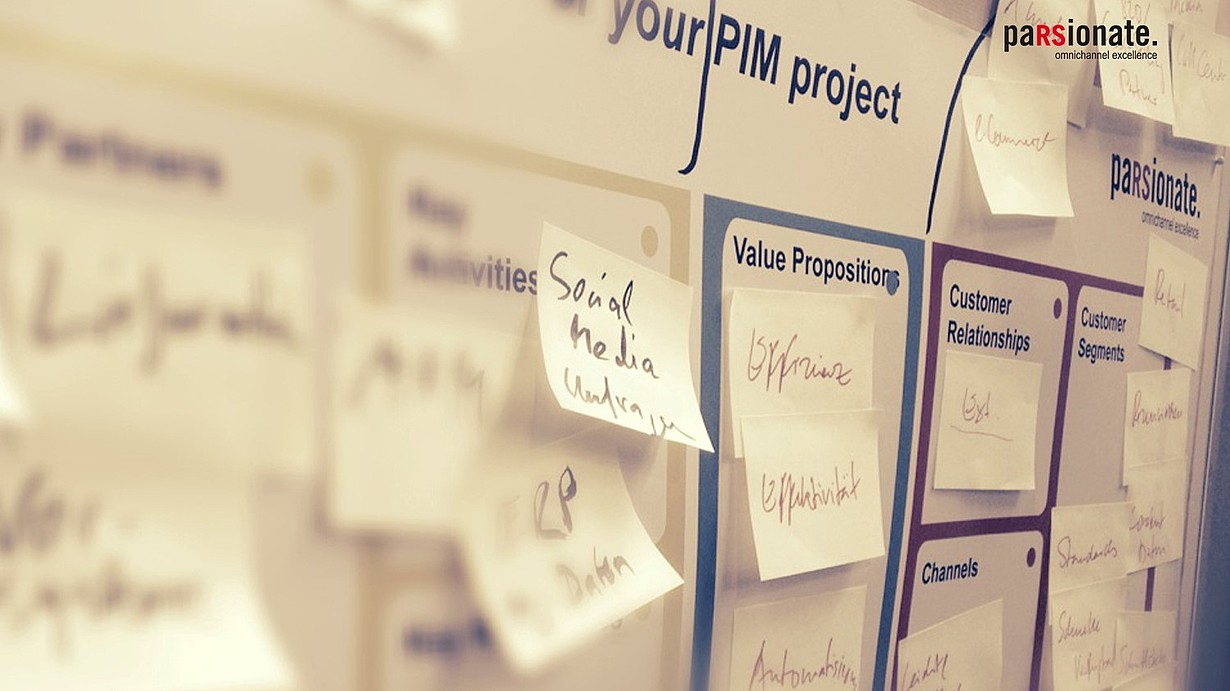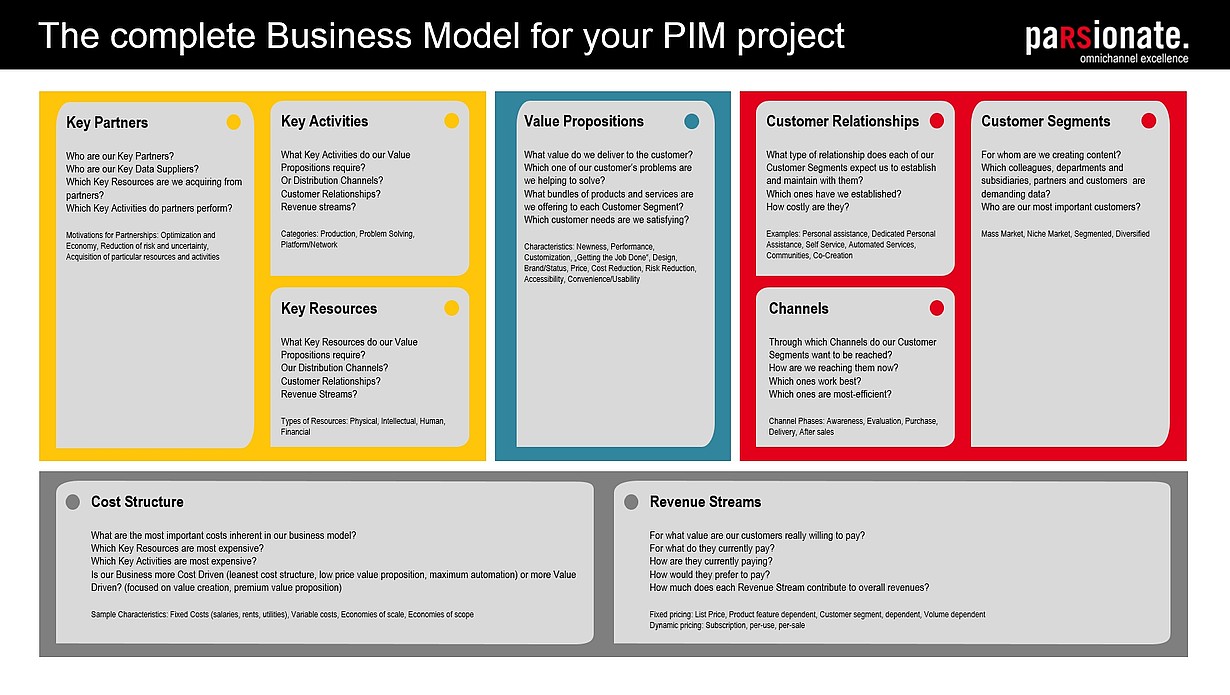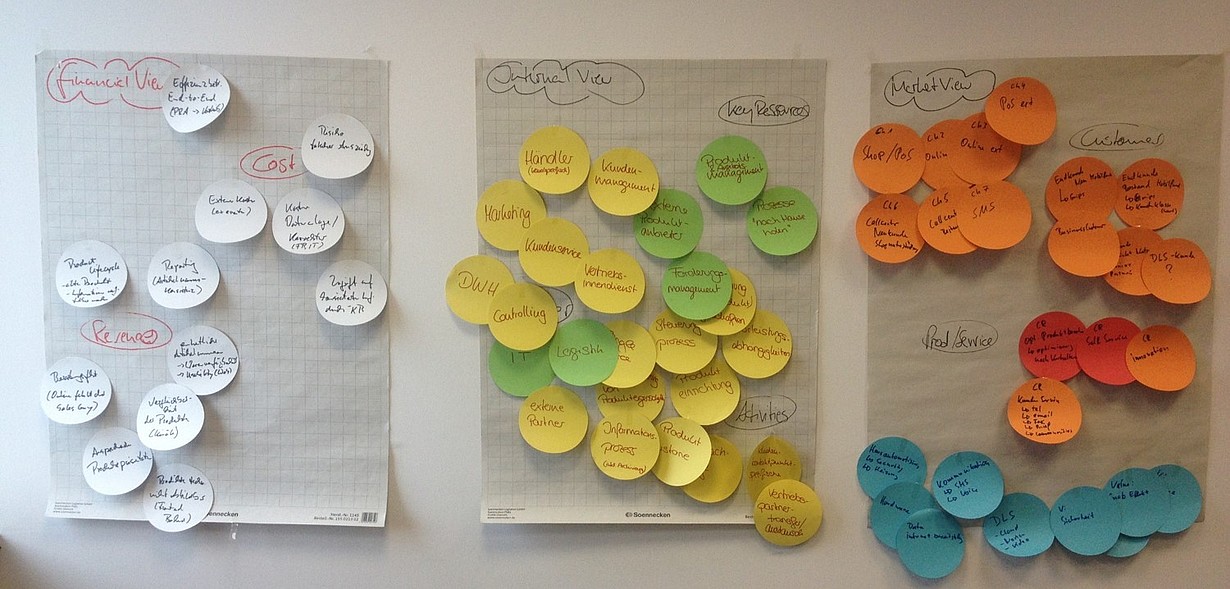Business Model Canvas For The Software Implementation?

Making this process more transparent based on a Business Model Canvas, is presented by Sören Berger on a practical example.
The Business Model Canvas of Dr. Alexander Osterwalder/Prof. Yves Pigneur a.f. is a helpful tool to make this implementation process more transparent for all participants. An indicator for this approach is to view the project in a holistic company perspective. Thereby a business plan is created by mapping the costs, the challenges and the overall value. – to design the formulated 9 areas in the Business Model Canvas, all affected departments are invited to a common workshop.
A report of practical experiences shows, which advantages the holistic view on PIM projects has.
An international fashion company wants to centralize the product data maintenance, to improve the data quality and to reduce the time-to-market. Quick: it wants to save money. Herefor it launches a PIM.
Yet the sample company has maintained the product data for articles in different departments with different criteria. In the ERP system translations have been created, and been changed or regenerated completely later on in the different output channels. Suppliers send their data via excel, and then it has been copied manually into the ERP system.

To map the Business Canvas approach, the segmentation in 3 relative short workshops has proved as most effective. Therefore the nine main points are summarized into three blocks.
Based on our example, we find these three points of view.
(Extract from the workshop report)
Internal sight:
- For an article which is available in Germany and in the European region: Which processes are there until the item appears in the online shop in all countries?
- Are there already comprehensive processes?
- Which processes have to be defined newly or summarized?
- Which processes are there for the translations of the description texts? - Who are the internal key partners/ key departments?
- Who has the process responsibility for example over the translation process? Who has to be involved?
- Where are the articles created: ERP, PIM or a further system?
Market sight:
- Which internal customers profit from the new solution?
- What is the benefit for external customers? Which new customers can be won?
- What can the customers expect? Which service level agreements are there?
- How can feedback be obtained (for example a product rating about awarded stars or free-text guest reviews) from the customers to the products? Which social networks should be responded? How can these information be used again, to raise the customer loyalty?
Financial sight:
Costs:
- How many persons are involved in the project?
- Are there external costs for the data acquis?
From which sources is the data retrieved?
Are there more favorable options? - Which efforts arise on the “data production” currently and after the PIM implementation?
Benefit:
- What are the potentials for existing channels?
For example e-shop, catalogue? - Which new channels can be created? For example mobile app?
- How fast can the products be applied or brought to the market?

These short workshops are the first step. To be preferably effective, their duration is half a day at max. Ambition is not to solve all the problems but to win a first good overview.
For the sample company such an entire strategy is built and aims for the implementation project are defined. The implementation project can be separated in different phases. First the general implementation of the PIM system with connection to the essential recognized interfaces and afterwards the implementation of the supplier portal.
As all effected departments are integrated and can apply themselves, the acceptance for the planned changes rise. Through the involvement of the employees from the beginning the motivation to finalize the project successfully is higher and a better understanding through the “view over the edge of the plate” for the demands / doubts of the other departments is achieved. Moreover the risk minimizes to let the essential aspects uncared. A holistic company sight on the project “PIM” is originated.